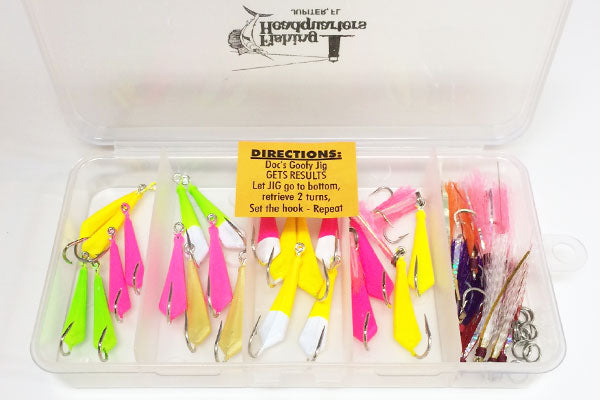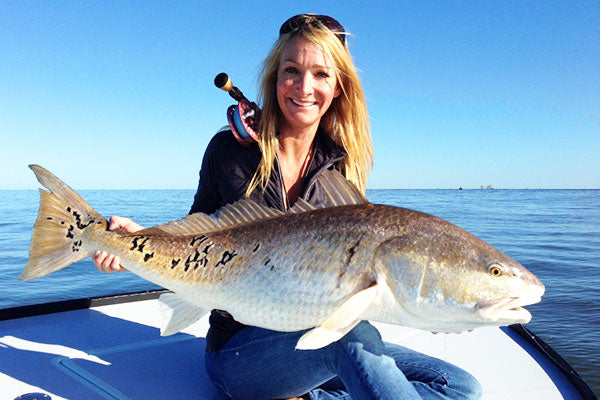The popping cork is one of the most popular rigs for a variety of species, including redfish, snook, trout, and flounder. Why? Because it works! But before you can reap the rewards, you need to learn how to use it properly.
Some lures are popular because celebrity anglers use them. Others because a marketing company has convinced you their latest design is the bomb. But sometimes it's because over time they have been proven effective again and again. The popping cork falls into the latter category.
The popping cork is one of the simplest, least technically advanced rigs available. You could make your own with a cork, bright paint, some beads, and a wire leader, but why bother when they only cost a few bucks? I am sure professional anglers have won more than a few tournaments with one. Still, their endorsement isn't needed – the creels of fish anglers bring home is advertisement enough. Go to any boat ramp or fishing pier, and you will see that most anglers have a fishing rod rigged with one, or at least have one in the tackle bag ready to go.
What is a popping cork?
The rig is simple, and consists of a brightly colored cork and beads rigged on a wire leader. There are a few variations, such as cupped corks or internal rattles, but the basic design is the same. Many anglers will have a favorite rig they rely on based on weight, cork shape/color, bead color, etc. but it is still a popping cork.
How Does a Popping Cork Work?
There are a few key features that make the popping cork so successful:
- It keeps the bait off the bottom. Doing so increases visibility and reduces snags by keeping bait out of the rock, weeds, etc. It also helps keep the bait in the strike zone.
- The popping cork attracts fish with sound. Whether it is the beads knocking together or the cork splashing when retrieved, the sound this rig produces is almost irresistible to a wide range of gamefish. It's not uncommon to see them strike the cork itself.
- It is versatile. You can rig a popping cork with live bait, dead bait, or plastics and enjoy the same level of success; you need to fish it a little differently with each application.
Using a Popping Cork
- Lobbing rig, rather than using a sharp cast, will reduce tangles
- Circle hook jig heads will increase hookups; the cork does decrease hooking setting ability
- A lighter jig head will allow for a slower, more natural bait presentation
- Heavier corks will cast better in windy conditions.
- Tying your jig horizontal will also increase the natural presentation; the bait will not hang down as much.
Live bait – rig bait to allow plenty of action as this will let the bait do the work for you. Baitfish hooked through the tail will naturally swim away from you and cause the cork to pop and beads to move. In this situation, you can cast the rig out, let it sit, and still catch plenty of fish. Perfect for beginners or small children.
Dead bait – it is possible to use dead bait, with shrimp being a favorite, but you need to do more of the work. When there is enough wind or current, the cork will move naturally and provide the action required. Otherwise, you will need to give it a few tugs now and again to attract fish to the cork and bait.
Plastics – a growing number of anglers are finding that a popping cork/plastic combination, especially when using Gulp Shrimp, is hard to beat. Again, unless there is enough wind or current, you will need to provide the action, so this is better suited for a cast, drift & retrieve method. When retrieving a few sharp tugs followed by a pause/reel in the slack, repeat pattern works well.
Which Popping Cork Should You Buy?
Over the years, I have found there to be a few corks that I tend to favor more. The Cajun Thunder has long been my go-to cork; they usually have high visibility styrofoam that comes in fluorescent yellow, green, or pink. The corks also feature heavy-duty brass and plastic beads. However, one of the issues I face is that the wire often used to create the cork bends or kinks, and it can be very challenging getting it straight again. As you can imagine, once the wire bends, the action of the cork isn't the same.
The solution was the Paradise Popper, it too is built with durable components, but the rig features a titanium wire that never kinks. I find that they last longer, and I save money throughout the year, especially on guided trips where customers love to toss their baits into trees, unintentionally, of course. Still, the cork is rarely affected, unlike the Cajun thunder. Here is a video I did showing why I like the Paradise popper:
You Can Make Your Very Own Popping Cork
I like to repurpose parts and pieces from old popping rigs, and they work great. After a little use, the wire tends to bend, and it can be cumbersome to use. Here are the supplies needed to make your cork rig:
- Popping Cork
- Two brass beads
- Two plastic beads
- Two swivels
- A foot of 150 to 200lb wire
Now that you have all the supplies needed to make the rig, here are the instructions on how to build it.
- Layout all of the necessary parts

2. Cut 10 to 12 inches of wire and use the screwdriver to round the wire to get a nice loop.


3. Use barrel wraps to connect your swivel to the wire; you can also use a full haywire twist if you desire.


4. Place your two plastic beads onto the wire; they are positioned above the cork.

5. Slide your cork onto the wire

6. Add both the brass beads to the wire, brass beads always go below the cork, and they help stabilize the bobber in the water. Finish it off by adding the swivel using the same barrel wrap technique.

Here is a great video demonstration on how to make your own popping cork:




